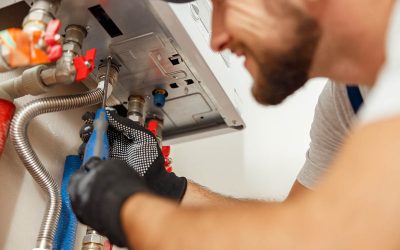According to the U.S Department of Energy (DOE), heating water accounts to up to 20% of a family’s utility bill. Therefore, it’s not surprising that many families across the country are looking for ways of reducing water heating costs. If your home’s utility costs are still high, even after making considerable efforts to reduce them, then it’s time to check your water heater. Whether you are a single or multi-family dwelling unit, making minor adjustments to your home can make all the difference on your water heating bill. Here are some tips to consider.
Contents
1. Control the Thermostat
Ever wondered what is the best temperature for a hot water heater? Well, if your priority is to save money it’s going to be about 122 degrees Farenheit. However, the lower you set your water heater temp, the higher the chance of bacterial growth.
2. Repair Faulty Faucets
Is there a leaking faucet in your home that you have been avoiding to repair? Well, it may be contributing to the high utility bills in your home. For example, a faucet that releases 60 drops per minute wastes over 3,100 gallons of water per year. If the water is coming from the water heater, that means you are not just wasting the water but also the energy associated with heating.
3. Minimize Time Spent in the Shower
We all love those long baths that leave you refreshed for months. However, a long hot shower will consume more water, which means more energy required for heating. Instead of taking baths, opt for short showers. Even if the bathtub is not filled to the brim, it will still require a huge amount of water, especially if your home has one of those large ones. A warm bath is good occasionally. But if you want to minimize water heating costs, then it’s advisable to stick with short daily showers.
4. Install Low-flow Shower Heads
Most people avoid renovating their bathroom with modern fixtures, due to the associated costs. However, even if you will not undertake a complete overhaul, you should at least replace your old shower heads with a modern low-flow shower head. Low-flow models consume half the amount of water used by the traditional shower heads. If it consumes less water, then there is a minimal strain on your water heater.
5. Remove Sediments from the Storage Tank
Sediments accumulate in hot water storage tanks over time. When this happens, they can reduce its efficiency while contributing to higher energy demands. These sediments should be drained regularly to keep the storage tank in great working condition. According to most manufacturers, this task needs to be performed after every six months. However, you can also do it in 3-month intervals, if you want to improve your unit’s efficiency. Removing the sediments will take less than 15 minutes, thus no reason to postpone.
6. Insulate Your Pipes
Water distribution pipes also account for heat loss. If your faucets are a far from the water heater, then the losses will be massive. To avoid this, you only need to insulate these pipes using wrap insulation. Insulating water pipes is an easy and cheap project. However, you need to be careful on how you conduct the process. If your water heater is gas-operated, then the insulation should not be anywhere near the flue. It’s always advisable to hire professionals to do this job.
7. Install a Timer on the Water Heater
If you are heating water that you are not using, then the energy consumed during the process goes to waste. To avoid this, you just need to install a simple timer, which can switch off the heater if you are sleeping or not using hot water. You can also use the timer to switch off the water heater if your utility company charges electricity higher during the peak hours. Why heat water that you will not use?
8. Install Heat Traps in the Storage Tank
A significant amount of heat can also escape through the hot water outlet pipe and the cold water inlet pipe. You can solve these issues by installing heat traps. Modern water heaters come with heat traps. However, if yours is the older version, then you need this improvisation to minimize heat losses. Heat valves prevent water from escaping when the tank is not in use. According to the Department of Energy, heat traps can save you up to $30 per year. Therefore, they will eventually pay for their installation costs.
9. Replace Your Water Heater
Most water heaters have a lifetime of at least 15 years. If yours is approaching the end of its life, then you might notice abnormally high utility bills. Replace it with a modern, efficient model. Consider installing a tankless water heater or a point of use water heater. As much as initial expenses for installation may be high, the savings on the heating bill will be worth the investment. Read this guide to choose the best tankless water heaters.
As you can see, you have numerous ways at your disposal to reduce water heating bills, without compromising your comfort. Implement the above tips in your home and you will realize positive changes on your utility bill.
10. Solar Power
As a final recommendation, you could even consider using solar panels to take advantage of a cheaper (and cleaner) energy source.

